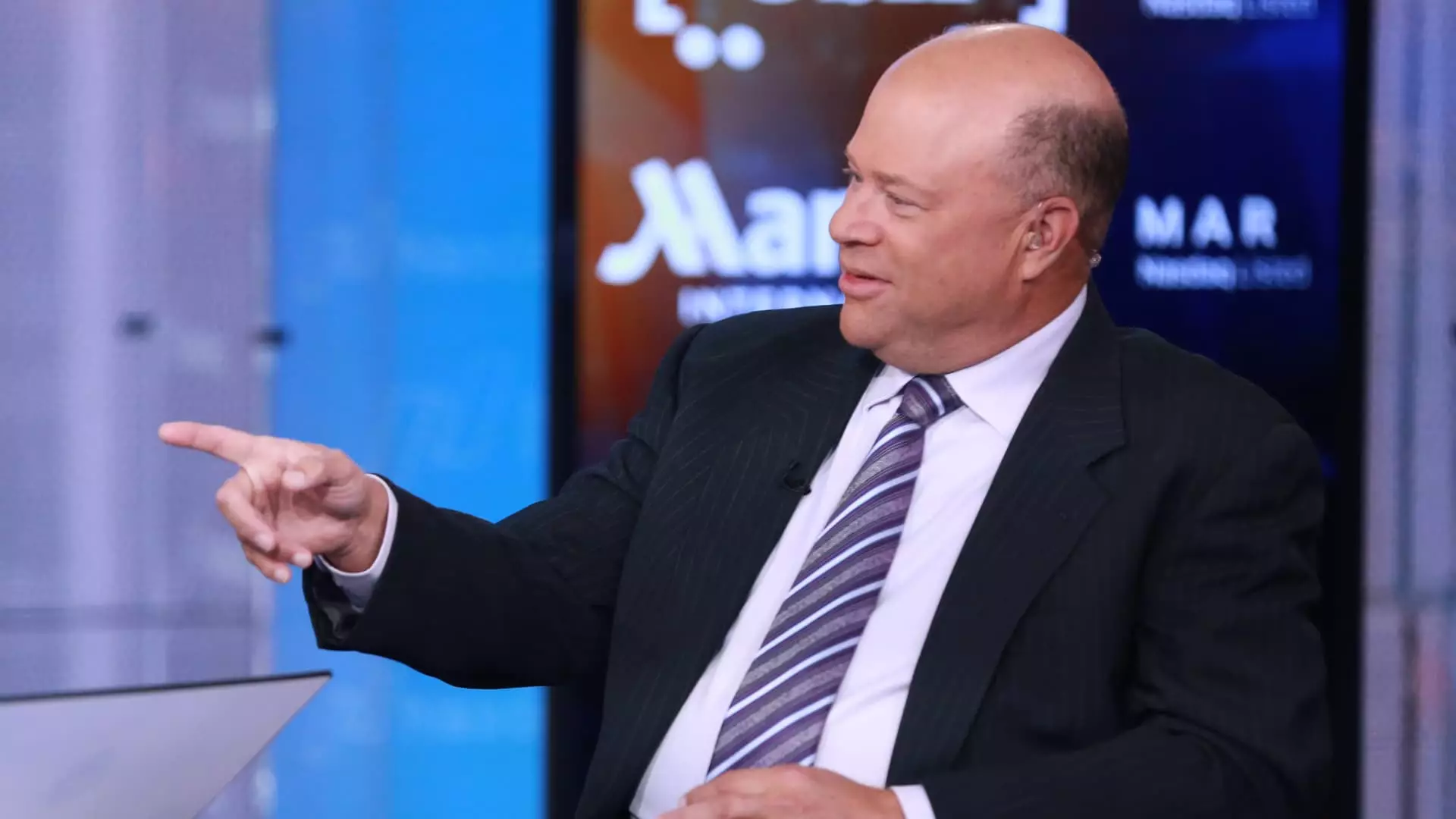In recent times, the Federal Reserve has adopted a seemingly supportive stance by lowering interest rates, hinting at further reductions aimed at bolstering economic growth. However, beneath this veneer of optimism lies a complex web of risks that threaten to destabilize the very markets these cuts aim to invigorate. Renowned hedge fund manager David Tepper aptly warns that while lower rates can stimulate demand, they simultaneously stoke inflationary pressures and inflate asset bubbles—an ominous development for investors and policymakers alike. His perspective challenges the widespread assumption that more easing is inherently beneficial, urging a nuanced examination of the potential fallout.
Lowering rates historically serves as an economic Band-Aid, but Tepper emphasizes the importance of moderation. Excessive easing, especially when inflation remains stubbornly high, can lead to demand outpacing supply, causing prices to spiral upward uncontrollably. The danger is especially high during periods when inflation persists without significant abatement, risking a vicious cycle of rising costs and diminishing purchasing power. Tepper’s insight underscores a fundamental truth: monetary policy is a delicate balancing act, where overreach can unleash unintended consequences.
The Market’s Elevated Valuations: The Mirage of Prosperity
Despite economic uncertainties, stock markets continue to soar, with valuations reaching levels unseen since the peak of the pandemic-driven rally in 2021. The S&P 500’s valuation nearly touches 23 times forward earnings, raising eyebrows among savvy investors. Notably, technology giants like Nvidia and Microsoft are trading at stratospheric multiples—30 and 32 times earnings, respectively—highlighting investor appetite for risk even amidst mounting macroeconomic concerns.
Tepper candidly admits to grappling with the paradox of high valuations amidst an environment that feels overcooked. While he remains invested, buoyed by the supporting easings, he recognizes the peril of overpaying. “Nothing’s cheap anymore,” he laments, revealing a growing unease about the sustainability of current levels. From his perspective, the confidence in continued Fed easing fuels markets but also masks underlying vulnerabilities—asset bubbles that could burst if the economy’s fundamentals falter.
This situation begs a fundamental question: Are markets truly reflecting real economic health, or are they artificially inflated by accommodative policies? Tepper’s cautious stance indicates skepticism about the sustainability of current valuations, warning that investors should remain vigilant and avoid complacency. The danger lies in complacency during these euphoric peaks, setting the stage for sharp corrections if economic realities shift unexpectedly.
The Political Push and the Reality Check
Political pressures further complicate the picture. President Donald Trump’s insistence on aggressive rate cuts adds a layer of unpredictability to the Fed’s decision-making process. While policymakers like Jerome Powell cite “risk management” as their guiding principle, market participants often interpret these moves as signals of easing confidence. Tepper’s skepticism about politicized interventions underscores the broader concern that monetary policy could become politicized, risking distortion of market signals and weakening the Fed’s credibility.
Tepper’s vantage point suggests that aggressive easing driven by political pressure is a perilous gamble. It may temporarily lift markets, but it increases the likelihood of an eventual correction once the unintended consequences—like inflation spikes or the formation of dangerous asset bubbles—materialize. His stance advocates for prudence, emphasizing that central banks should resist the temptation to overdo it in their pursuit of short-term stability at the expense of long-term health.
Fundamental Valuations and Market Risks
While Tepper maintains that he hasn’t yet abandoned stocks, he admits that the valuation levels are troubling. The “constructive” stance based on easing must be tempered with awareness of the risks posed by current prices. His real concern is that the market’s current exuberance might be masking vulnerabilities, setting the stage for a severe correction if inflationary pressures intensify or if liquidity withdraws unexpectedly.
He also reveals an active tactical approach—trading his positions in high-flying stocks like Nvidia, balancing risk and opportunity. His willingness to adjust positions points to an understanding that current conditions are fragile, and that investor patience must be paired with strategic flexibility. In a landscape where valuations seem disconnected from economic realities, Tepper’s approach offers a lesson in cautious skepticism—a call for investors to remain vigilant against complacency.
In essence, Tepper’s insights portray a marketplace teetering on the edge of overextension. While central banks may wish to keep the party going, the underlying risks, including inflation, asset bubbles, and potential policy missteps, suggest that a more cautious approach is prudent. The current environment demands vigilance—and perhaps, a readiness to manage the inevitable correction that could be lurking just around the corner.

